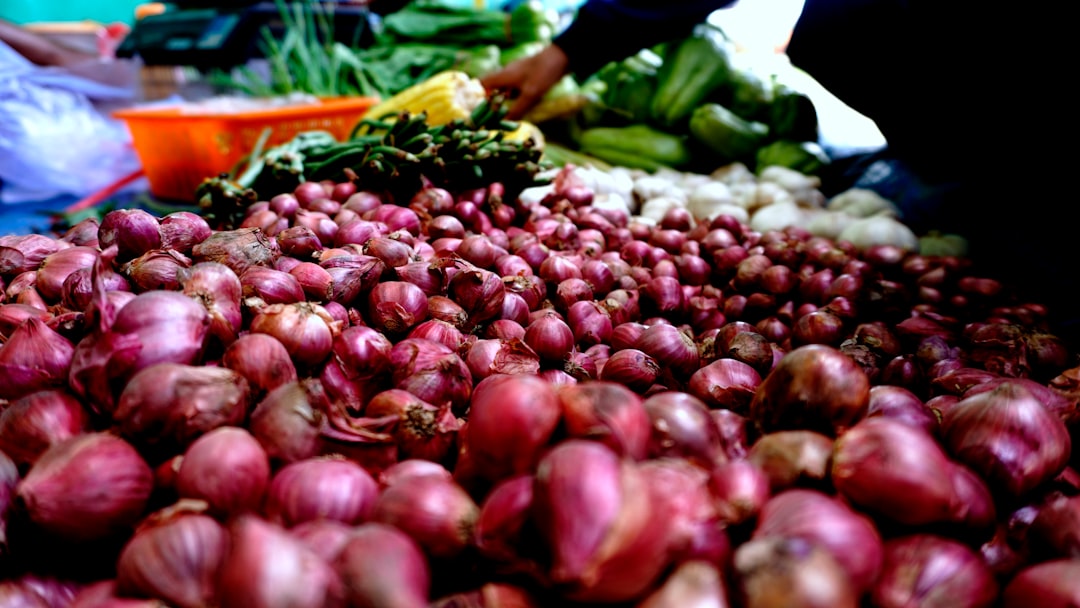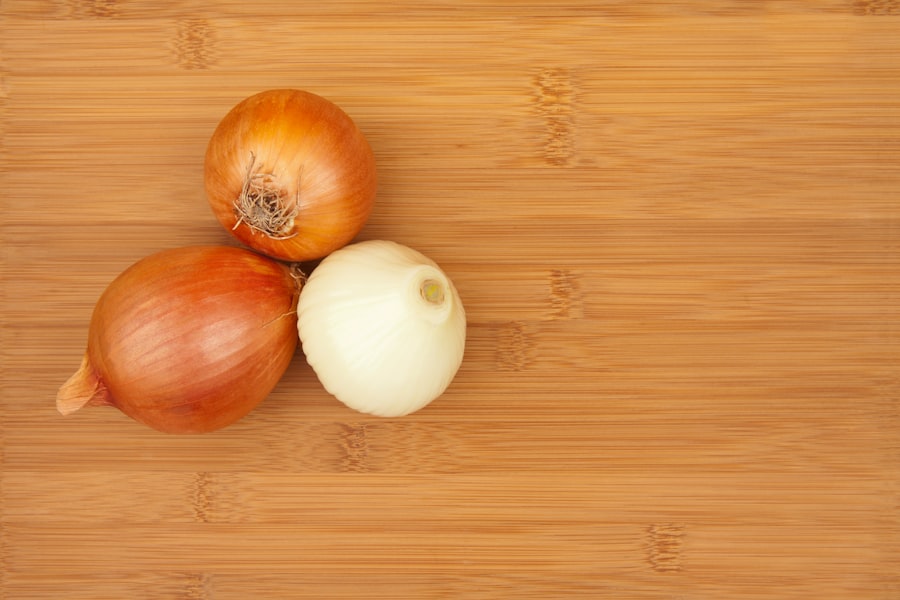Planting Onion Sets: Dig Deep for Stronger Roots

Onion sets planting is a popular method of growing onions in home gardens. It involves planting small, immature onions, known as sets, instead of starting from seeds or transplants. This method offers several advantages and is a great option for both beginner and experienced gardeners.
Onion sets are essentially small bulbs that have been grown from seeds the previous year. They are harvested when they are still young and tender, and then sold for planting. These sets are easy to handle and plant, making them a convenient choice for gardeners.
Key Takeaways
- Onion sets are small, immature onions that are used for planting.
- Planting onion sets can save time and effort compared to starting onions from seed.
- Choose onion sets that are firm, dry, and free from mold or soft spots.
- Prepare the soil by adding compost and ensuring good drainage.
- Plant onion sets in early spring, about 4-6 weeks before the last frost date.
Benefits of Planting Onion Sets
One of the main benefits of planting onion sets is that it allows for a quicker harvest time. Since the sets are already partially grown, they require less time to mature compared to starting from seeds. This means that you can enjoy fresh onions from your garden sooner.
Another advantage of using onion sets is that they often result in a higher yield. The sets have already gone through the initial stages of growth, so they have a head start compared to seeds or transplants. This can lead to larger and more abundant onions at harvest time.
Additionally, onion sets are less susceptible to pests and diseases compared to starting from seeds. The young plants have already developed a strong root system, making them more resilient against common onion pests and diseases. This can help ensure a successful harvest and reduce the need for chemical interventions.
Choosing the Right Onion Sets for Your Garden
When choosing onion sets for your garden, there are several factors to consider. First, consider the variety of onion you want to grow. There are different types of onions available, each with its own characteristics and flavor profiles. Some popular varieties include yellow onions, red onions, and sweet onions.
Next, consider the size of the onion sets. Smaller sets will typically produce smaller onions, while larger sets will produce larger onions. Consider your preferences and the space available in your garden when choosing the size of the sets.
Lastly, consider the quality of the onion sets. Look for sets that are firm and free from any signs of disease or damage. Avoid sets that are soft or have moldy spots, as these may not grow well.
Preparing the Soil for Onion Sets Planting
| Soil Preparation Metrics | Values |
|---|---|
| Soil pH | 6.0 – 7.0 |
| Soil Temperature | 50°F – 65°F |
| Soil Moisture | Moist but not waterlogged |
| Soil Texture | Sandy loam or loamy soil |
| Organic Matter | 2% – 3% |
| Fertilizer | 10-10-10 or 12-12-12 NPK |
| Soil Depth | 6 inches |
| Soil Drainage | Well-drained |
Onions prefer well-draining soil with a pH level between 6.0 and 7.0. Before planting onion sets, it is important to prepare the soil properly to ensure optimal growth and yield.
Start by removing any weeds or debris from the planting area. This will help prevent competition for nutrients and reduce the risk of pests and diseases.
Next, loosen the soil using a garden fork or tiller. Onions have shallow roots, so it is important to create a loose and friable soil bed for them to grow in. This will also help with drainage and prevent waterlogged conditions.
Add organic matter, such as compost or well-rotted manure, to the soil. This will improve its fertility and provide essential nutrients for the onions. Work the organic matter into the top few inches of soil using a garden rake or hoe.
When to Plant Onion Sets
The best time to plant onion sets depends on your location and climate. In general, onion sets can be planted in early spring, as soon as the soil can be worked. However, it is important to consider factors such as frost dates and temperature fluctuations.
Onions are cool-season crops and can tolerate some cold temperatures. However, they do not tolerate frost well. If you live in an area with late spring frosts, it is best to wait until after the last frost date to plant your onion sets.
Additionally, onions require a certain number of daylight hours to form bulbs. This is known as day length sensitivity. Short-day onions require 10-12 hours of daylight to form bulbs, while long-day onions require 14-16 hours. Choose the appropriate variety based on the length of your growing season and the number of daylight hours available.
How to Plant Onion Sets: Step-by-Step Guide

Planting onion sets is a straightforward process. Follow these step-by-step instructions for successful planting:
1. Prepare the soil as mentioned in Section
2. Dig a small hole or trench in the prepared soil, about 1 inch deep.
3. Place the onion sets in the hole or trench, with the pointed end facing up.
4. Space the sets about 4-6 inches apart, allowing enough room for the bulbs to grow.
5. Gently cover the sets with soil, ensuring that they are completely covered.
6. Water the newly planted sets thoroughly to settle the soil and provide moisture.
7. Mulch around the onion sets to help conserve moisture and suppress weed growth.
Caring for Onion Sets After Planting
After planting onion sets, it is important to provide proper care to ensure their growth and development.
Watering is crucial for onions, especially during dry periods. Onions have shallow roots, so they require consistent moisture to prevent stress and promote bulb formation. Water deeply once or twice a week, providing about 1 inch of water each time.
Fertilizing is also important for onion sets. Apply a balanced fertilizer, such as a 10-10-10 or 14-14-14 blend, every 4-6 weeks throughout the growing season. This will provide essential nutrients for healthy growth and bulb development.
Weed control is essential to prevent competition for nutrients and reduce the risk of pests and diseases. Regularly remove any weeds that appear around the onion sets, taking care not to disturb the shallow roots.
Common Onion Sets Planting Mistakes to Avoid
While planting onion sets is relatively easy, there are some common mistakes that gardeners make. Here are a few tips to help you avoid these mistakes:
1. Planting the sets too deep: Onion sets should be planted about 1 inch deep. Planting them too deep can result in poor growth and smaller bulbs.
2. Overcrowding: Proper spacing is important for onions to grow and develop properly. Overcrowding can lead to smaller bulbs and increased competition for nutrients.
3. Neglecting watering: Onions require consistent moisture to grow well. Neglecting watering can result in stunted growth and poor bulb development.
4. Failing to control weeds: Weeds can compete with onions for nutrients and water, reducing their growth and yield. Regularly remove weeds to prevent this.
Harvesting and Storing Onion Sets
Onion sets are ready for harvest when the tops start to turn yellow and fall over. This usually occurs in late summer or early fall, depending on the variety and growing conditions.
To harvest onion sets, gently lift them from the soil using a garden fork or trowel. Allow them to dry in a warm, well-ventilated area for a few days until the tops are completely dry.
Once dry, trim the tops to about 1 inch above the bulb. Store the onion sets in a cool, dry place with good air circulation. They can be stored for several months if properly cured and stored.
Tips for Successful Onion Sets Planting
Planting onion sets is a rewarding experience that can provide you with a bountiful harvest of fresh onions. To recap, here are some important points to remember:
– Choose the right onion sets for your garden based on variety, size, and quality.
– Prepare the soil properly by removing weeds, loosening the soil, and adding organic matter.
– Plant onion sets at the appropriate time, considering frost dates and day length sensitivity.
– Provide proper care by watering, fertilizing, and controlling weeds.
– Avoid common mistakes such as planting too deep, overcrowding, neglecting watering, and failing to control weeds.
– Harvest onion sets when the tops turn yellow and store them in a cool, dry place.
By following these tips and guidelines, you can have a successful onion sets planting experience and enjoy the delicious taste of homegrown onions. Happy gardening!
If you’re looking for expert advice on how to deep plant onion sets, look no further than Lawn World. Their comprehensive guide on planting onions provides step-by-step instructions and valuable tips to ensure successful growth. In addition, their website offers a wealth of information on various gardening topics. To explore more articles related to gardening and landscaping, check out Lawn World’s sitemap.
FAQs
What are onion sets?
Onion sets are small, immature onion bulbs that are used to grow onions. They are typically sold in bags or bunches and are available in different varieties.
How deep should onion sets be planted?
Onion sets should be planted about 1 inch deep in the soil. This will allow the roots to establish themselves and the onion to grow properly.
When is the best time to plant onion sets?
The best time to plant onion sets is in the early spring, as soon as the soil can be worked. This is usually around March or April, depending on your location.
What type of soil is best for planting onion sets?
Onion sets grow best in well-drained soil that is rich in organic matter. The soil should be loose and crumbly, with a pH between 6.0 and 7.0.
How far apart should onion sets be planted?
Onion sets should be planted about 4-6 inches apart, with rows spaced about 12-18 inches apart. This will allow the onions to grow properly and prevent overcrowding.
How often should onion sets be watered?
Onion sets should be watered regularly, about once a week, depending on the weather conditions. The soil should be kept moist but not waterlogged, as too much water can cause the onions to rot.
When are onion sets ready to harvest?
Onions are typically ready to harvest when the tops start to yellow and fall over. This usually occurs in late summer or early fall, depending on the variety and growing conditions.



